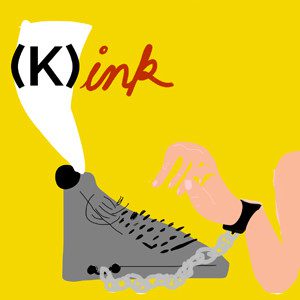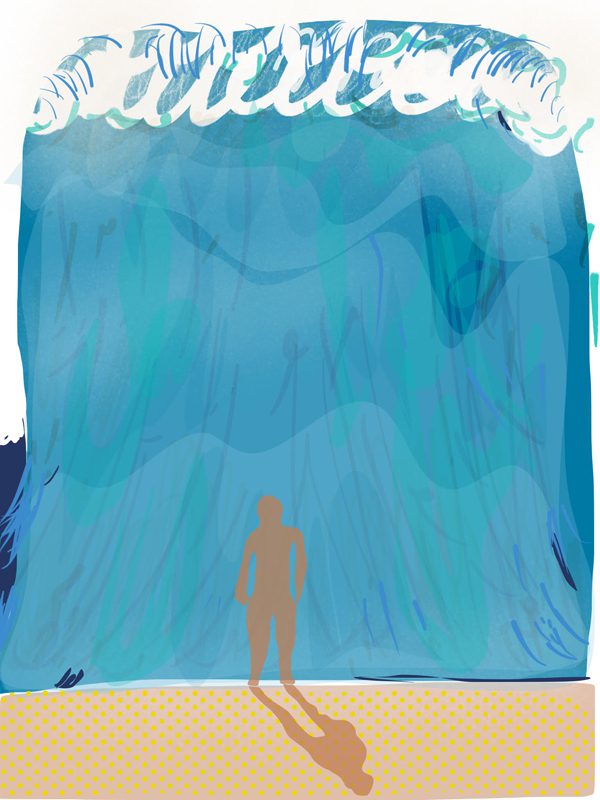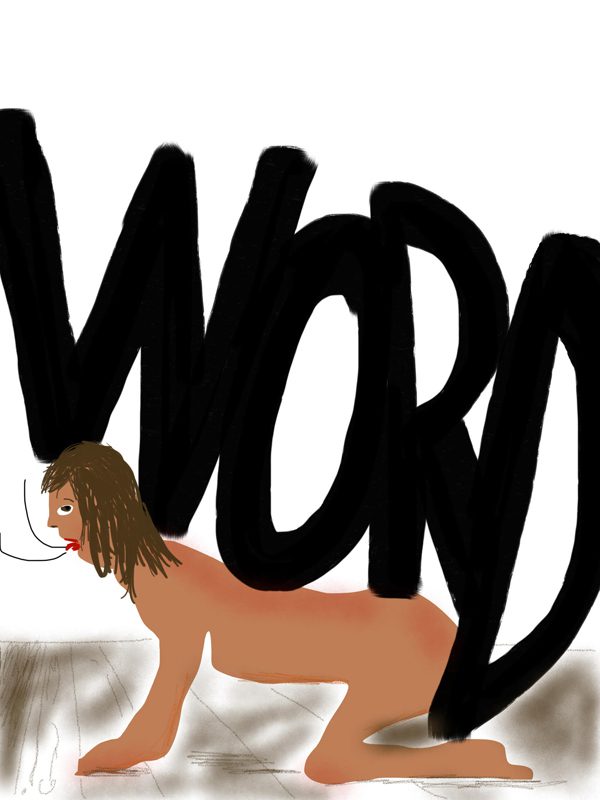
There’s evidence that D.H. Lawrence enjoyed an erotic power exchange relationship with his wife, that James Joyce was into scat (among other things), and that Oscar Wilde—well, most of us know what Oscar Wilde liked. These literary geniuses explored radical sexual agency and desire in their work and in their relationships, but little beyond rumors and personal letters exist to tell us what they themselves thought of their turn-ons and the ways in which those dovetailed with their writing. Even if space for such a discourse and community had existed back then, Lawrence, Joyce and Wilde couldn’t freely discuss their sexuality. As it was, they faced censorship and generated scandal wherever they went, and of course Wilde went to prison for his sexual behavior.
Although our world is still intolerant of sexual difference, I want to believe we’re at a point where people can speak openly about the consensual ways we express our erotic selves. And I’m interested in the connections between those private expressions and the larger, more public work we do in the world. This series is meant as a forging of community; a validation of that which gets called sexual deviance; and a proud celebration of the complex, fascinating ways that humans experience desire.
In this ongoing series of short personal essays, writers in all genres—novelists, poets, journalists, and more—explore the intersection between our literary lives and practices and our BDSM and fetishistic lives and practices. In other words, these essays aren’t about writing about non-normative sex: rather, it’s a series about how looking at the world through the lens of an alternative sexual orientation influences the modes and strategies with which one approaches one’s creative work.
If you have questions or comments, or if you’re a writer who would like to contribute, please contact me at kinkwriting@gmail.com.
–Arielle Greenberg, Series Editor
***
The Only Way Through Is All the Way Through
A dream sticks with me. I dreamt it as a teenager, right about the time I’d been sexually assaulted but before my unconscious mind had released the knowledge to me, trusting that I had a way to process it into something beyond desolating shame. In the dream, I am standing on the beach, facing an ocean. It’s dark, but still light enough to see. My friends are near me, including the boy who pulled me down the mountainside by the elbow years ago. As we loiter, a wave rears up—a tsunami, really, enormous in an otherwise calm ocean. It hovers in mid-crest. I watch its roiling, churning water, the whorls and splashes contained within its suspended form. I notice I don’t feel dread. Wouldn’t one feel dread, seeing such a wave like that, threatening, ruled by its own sense of agency or science? But there is no dread. Nor is there fear. Instead, I feel awe. I witness the power of this seemingly sentient force observe me just as I observe it. This wave holds a precipice I cannot leap: the giant wave never crashes; it never dissipates. We watch each other for a while, and then the dream ends.
As a writer, I’ve always been fascinated by traumas, and as a creative nonfiction writer, they come in handy, since conflict and the quest for its resolution drive storytelling. It’s been important to me to try to take as big of an experience as possible and hold it long enough to see what it reveals, a quality I surely share with many writers, both on and outside the page.
Holding intensity in this way is also the basis for a BDSM experience. A scene may look like a traumatic experience, or feel like that. But it’s very different. Trauma steals meaning and expression. BDSM and writing create them.
In both my experiences of this sexual assault and then, years later, being stalked for three years, I compartmentalized intensity until I could find a way to release it. This process wasn’t an act of will: it was survival, automatic, my old reptilian brain governing the process. For me, the way of releasing it, once the traumas had surfaced, was a twofold path—writing and BDSM. They both make sense: BDSM breathes sensory expression into an embodied memory. Writing also creates a pathway into that terrifying black hole of trauma, and, if you stay with it, generally it reveals a pathway out.
BDSM can be a loop of erotic desire and satisfaction, obviously, but I believe it can also serve a different set of drives. When my stalker was in prison, and life was supposed to be safe and back to normal, I craved BDSM like the thirsty crave water. I wouldn’t have put it in these terms back then, but unconsciously I turned to kink to investigate the theft of my will, and the destruction of normality that being stalked for three years had brought on me. I craved adventure, drama: those things had become normal during an unsafe time. Without knowing it at the time, it also gave me something to write about that wasn’t the same trauma, same story—I could project the themes trauma gave me into kinky scenes that were pleasures to experience and express, first in a negotiated scene and then by reflecting the scene into language, the writing of scenes. In playing with the text, I discovered a new way to tell the harder story I’d been grappling with, both to myself and to the page.
My first real BDSM scene—beyond experimenting with fuzzy handcuffs—was put into motion the same way so many modern initiations begin. I answered one bold Craigslist post in the Casual Encounters section seeking rough sex. A scene with him was just a taste, and I wanted more, and harder, than he could give me. At his suggestion, I subscribed to BDSM dating sites, leading to a date with a notoriously harsh sadist Top who carried with him a questionable reputation, I later learned. He brought me to a professional Domme’s dungeon, to which he’d been entrusted a key. For the next seven hours, he used on me toys and tools I’d never before imagined had any place in sexuality. Until then, the word had been unconsciously synonymous with “lovemaking,” a term that oozed out of the dolls and Disney movies of my upbringing. He controlled my breath with a gas mask, only allowing me his exhalations to breathe. He warmed the skin of my breasts, back, and ass with a series of floggers, their multiple leather tails spreading out their impact to my skin. He moved on to single tail whips that held all their sound-barrier-breaking power in one thin stripe of animal skin lighting up mine. That all launched me into the outer space of dissociation. Fine; no big deal—dissociation is familiar territory for those who’ve experienced sexual assault and stalking. It wasn’t until he beat me with the bull pizzle—“the dried penis skin of a bull,” he snickered as he made me kiss this new toy—that I was slammed back into my body like nothing I’d ever before experienced.
When he hit me with it, I’d found something big enough to fit my trauma into, a form comparable, finally, to its size and unwieldy power. Where the trauma was enormous, roiling, and too big to comprehend, this sensation was precise, tangible, yet just as large. Finally, something that matched its caliber, in just a split second. It was a searing pain so big that I had to try to take it apart and feel its nature in slices: first there was the initial fire, then the wash of that fire up through my head, and down to my toes. Localized, then universal, that one whack ignited my entire nervous system in one big bang. It was relief. I’d never felt the nerves in me as such a complete network before. Not until then had it ever been so lit up.
There were nineteen more strikes.
A reminder then that it’s only a word—a word!—that can stop this.
A safeword.
A concept. A piece of language.
That is incredible.
Pummeling him with my fists, running out into the dark night of Denver’s warehouse district, falling on the ground in a mess of tears, calling 911—none of that would have helped. Just one word was all that I had, all I needed.
Knowing I had it, I chose not to use it. That gift was enormous, singular. It is the moment I define as the fulcrum of my transformation, from trauma to regaining my agency. Numbness broke into sensation, and sensation launched me back into my knowledge that I am in my body, that it is mine, and so is my story.
*
Both wordless traumas and creative ideas have that magnetic way of cloaking themselves in unconsciousness. Writing about it necessitates a phase—the rough draft—that’s a lot like dissociation, stepping into what’s wordless and unseen. It’s not up to us, not our conscious minds—not in the beginning at least. It’s more about holding still in the face of a really powerful force that has annihilative potential, and allowing sense to manifest. Like waiting for the endorphin rush to take over in a BDSM scene and for pain not to just feel harmful, like something to run from, but something powerful and instructive. Eventually it takes a useful shape. Sometimes it’s more than useful: it can be euphoric, nuclear in what it’s able to transmit.
This is what makes writing so good, and so hard. It’s patience, endurance. It’s showing up and looking at something powerful, letting its full import materialize, and feeling it as fully as you possibly can. Holding on as long as possible until something breaks through—an insight, a change, often accompanied by sublime euphoria.
To endure suffering, whether physical like in BDSM, or psychological as it is in writing, is to challenge its nature and demand that it release something meaningful, tangible, transformative. I think of an interview with the writer Nick Flynn, who has written about his mother’s suicide. He said that many days after writing he’d find himself in a fetal position on the floor. It’s not easy. But a sense of curiosity infuses this effort: there is something to discover. Writing can take us back into our most vulnerable places, and return to us a sense of strength in having made the journey. It can give us what those twenty rawhide cane whacks gave me: a glimpse at a precipice within us that we are big enough to hold.
***
Rumpus original logo and art by Liam Golden.






